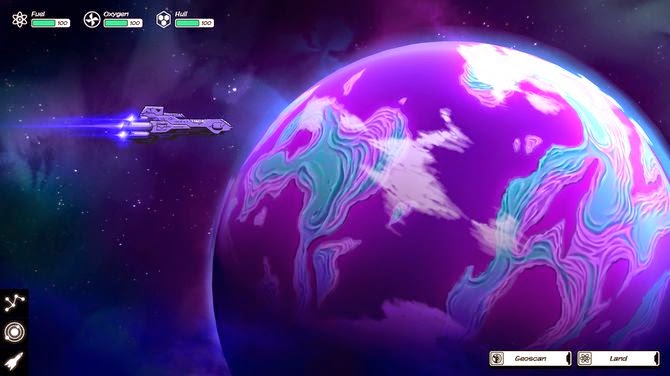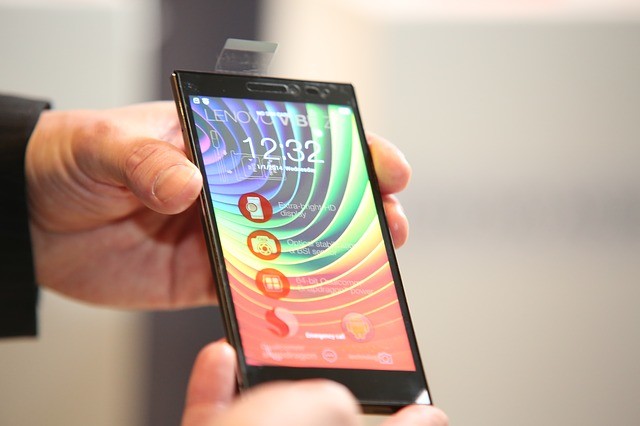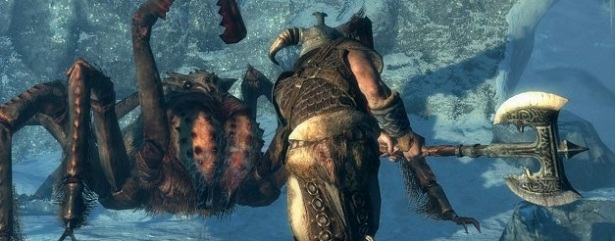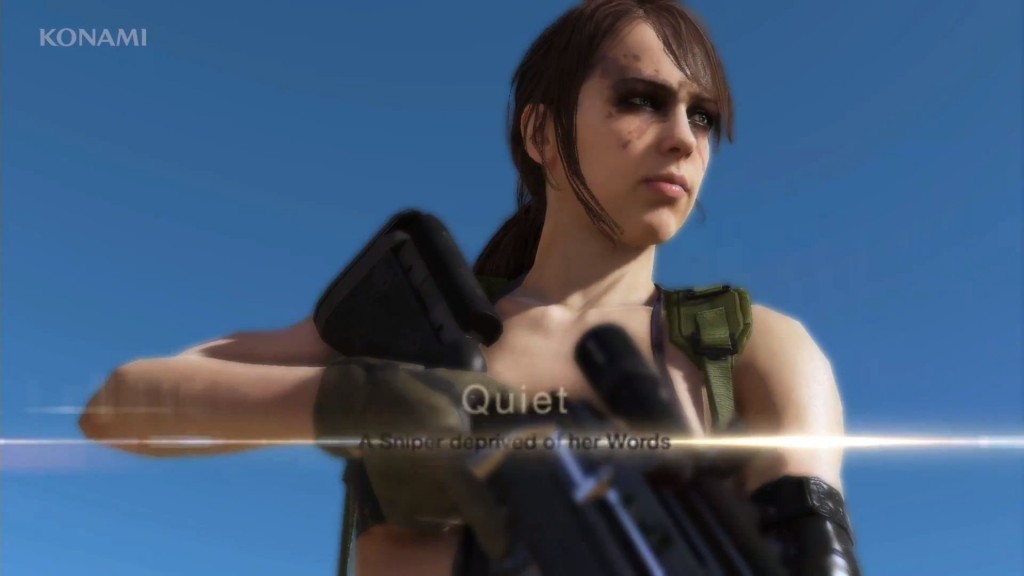

What's Out There?
Out There is one in the depths of the universe located somewhere, merciless and hard survival adventure. An astronaut comes out of hyperspace sleep to be but is not as expected during the orbit of Jupiter's moon, but in the middle of nowhere. The player's task is to bring the astronauts to a certain destination so that he can begin his journey home. But the way is not only wide, but dangerous and unpredictable.
The game is essentially limited to three different views. On the one hand, there is the star map, where you can view the ambient solar systems that you could visit. On the other hand, there is the solar system map showing the respective controlled solar system. Finally, there is the Cargo view. In this view, you cannot only the status values of the spaceship let (energy, ecosystem resistance) show, but also get an overview of the items that you have with you and the technologies that have been installed in the space ship.
A failed trip means a new beginning. No ifs and buts. If any progress is lost and it starts all over again. And for what the whole thing? For the next high score and of course the piece more experience in order to do better in the next run!
Solar Systems and Planets
There are a number of different solar systems and planets. Every journey from one system to the next consumes fuel and oxygen. When controlling a supernova, for example, and the hull is often claimed, which is why you should always avoid these system normally.
Solar Systems
- Yellow Dwarf
- Red Dwarf
- Blue Supergiant
- Red Giant
- Supernova
- White Dwarf
- Neutron Star
- Black Hole

Planets
- Garden Planet (Breathable atmosphere)
- Rocky Planets (rich in metallic ore)
- Gas Giants (Empire of fuel Hazardous / risky / self-destructive orbit)
Fuel, Oxygen and Hull
These three attributes are the linchpin of Out There. While fuel is not used only for travel to distant solar systems, but also serves an important role in the procurement of elements such as iron or hydrogen, the hull indicates the status of the spacecraft. Oxygen consumed themselves as truly as fuel when traveling from planet to planet or solar system to solar system. All three values can have a maximum value of 100.
Fuel can (depending helium fuel +4) (+2 per hydrogen fuel) to refuel with hydrogen and helium. Both elements can be (and later with a better probe of suns) promote with a probe of gas giants.
Breathing air can replenish oxygen, which is obtained primarily through holes on the planet. The landing on a planet garden is a popular venue alternative, since the oxygen-containing atmosphere fills the tank of the space ship completely.
The hull can be repaired by iron. An iron element corresponds to +2 hull.
All data refer to the standard spaceship, with which one starts the adventure. In Out There, it is possible to take over abandoned spacecraft of extraterrestrial civilizations. Depending on the spaceship can use this other items for repair or refueling.
Holes and Elements
Provide is installed in a space ship drill holes will be on rocky - or do any garden planet. For this purpose, you land on one of said planet and lead a hole on the planet's surface through. Here you can on a scale from 1 to 10 to decide how deep you want to fix the hole. During drilling of 1-3 without risk, however, are less productive, holes 4-7 the drill can damage but erode more elements. Holes of 8-10 are risky and can damage the drill or destroy, but are usually most profitable. The selected depth value is not only for the hole depth, but also indicates how much fuel the drilling operation will consume. In the same way as the bore, consume and start landing on the planet fuel.
The Elements Include:
- Carbon (C)
- Cobalt (Co)
- Iron (Fe)
- Gold (Au)
- Hafnium (Hf)
- Helium (He)
- Copper (Cu)
- Omega
- Platinum (Pt)
- Oxygen (O)
- Silicon (Si)
- Thorium (Th)
- Hydrogen (W)
- Tungsten (W)
Technologies
At the beginning of the journey, the spacecraft has a couple of installed modules, which are necessary for the trip. Technologies can damage caused by conditions in the course of the journey or go completely broken. While damage takes only a repair for the cost of a few elements with it, requires destruction of the construction of the module. The Erbau requires the investment of more elements.
Technologies take each one an inventory slot in the spaceship and are mostly enriching. From improved drill down to the shield generator that amplifies the space ship's hull to technology that enables traveling through black holes - all that is desirable and almost indispensable, but also difficult to obtain or just randomly.
By different events in the game, new technologies can learn. Some of these events can also cause that a technology is forgotten. This is so far not bad, as long the module is installed. If this does go wrong, the module can only build again, when the technology was learned again.
Certain technologies need other, installed technology to be used. It is important that both technologies are installed in the space ship directly "neighborhood" so that synergy can flow. This is characterized by a blue-glowing frame around the module.
Events
Out There is tough. As if the seemingly never-ending procurement of resources is not hard enough, the game wins by various events *, an unknown variable, although it can take positives in part; felt but usually does the opposite.
* Everything has its consequences. Be it the contact with an extraterrestrial life form, a violent solar flare, the clumsiness of the astronaut or a discovery on a planet. Some events bring some fuel or oxygen, others cost you hull, consume unforeseen elements or destroy technologies.
So unpredictable events may be, as varied and exciting but they make every play-through again and again.
An example event
You travel to a yellow dwarf, not far from your current location. An event follows:
On a small planet in orbit around a star, I discover a breathtaking place .... About how the Caribbean of the earth. I ended up in a peaceful jungle on the coast and took a walk in the white sand. To the sound of the surf I fell asleep on the beach and had a dream about the good old world. Life is so beautiful here!
I could ...
- Locate here
- Blow away
Now it is up to the player which choice he makes. A settle is a different reaction to have considered it will trigger the fly away. Which is the better choice here, you sometimes - especially painful - learn.
The "Here settle" had to order:
I give in to temptation. I'm building a small hut made of palm branches and doze in the sun lying on again. But I am awakened by a strange noise again ... the grains of sand are alive ... and attack my ship! They want to destroy it and expand the beach with it! I can not allow my only hope for salvation decays. Quick I return to my ship back without me turn to the dream world again - in the knowledge that they would one day devour also micht.
- Profit: +100 oxygen
- Loss: -30 hull
Tips for Starting
- Never visited the alien cube in the starting system. This consumes unnecessary fuel and produces no effect, since the cube is only part of the introductory story.
- It is not necessary to visit any solar system and each planet / gas giants in this. The primary task in Out There is to be found on the selected target point on the star map, so as to find a way home. All interactions with the solar systems are primarily only to have you with the necessary resources to survive the journey. Detours cost only unnecessary resources!
- It proves to be very effective when you send the probes in the maximum depth (10) on gas giants. While this has the consequence that the probe is damaged, but mostly you can promote on helium or hydrogen rich deposits. The damaged probe can be out with the use of very little iron repair again. Fuel is the most important resource in the game, so it can never hurt to have more than two stacks of helium and / or hydrogen in stock.
- Oxygen is essential for survival without question, but you concentrate on its status as one usually finds regular garden-planet, you should always travel as they fill the oxygen tank to the maximum value.
- At garden planet you make always an alien race. Upon contact, you can choose whether you want to talk to this or not. Although you will mostly never understand what is said, because you're not speak the local language, is always looking for the interview! This has only positive result. So you learn not only words of alien language, which may already be bringing you the next time you contact a little more clarity about what was said, but usually also gets a new technology or even the rare element Omega.
- Always have some iron on board. Even if your ship must repair, never invested the entire stock but always lifts, 2 - 3 units iron on. You will need it if a base module of the ship should go broke! Attention: Better modules require other or more elements for the repair. An overview gives your technology menu.
- Some events offer you the option of a to perform various activities (eg, "Press the switch I or II). It can not hurt to write down the events with the option selected by you somewhere. Why? Events indeed occur Random again and again and there are a variety of them, however, will sooner or later be repeated yet. Should you meet again to an event that you know from the past already, you can decide whether to respond to your actions were positive or if the offers to choose another option as the consequences of each option will always be the same.
Out There Omega Edition walkthrough




 How to get more Grand Theft Auto V Cash, Buy property and Stock Market and more, Tips and Tricks Guide
How to get more Grand Theft Auto V Cash, Buy property and Stock Market and more, Tips and Tricks Guide God of War: Ascension Wiki .
God of War: Ascension Wiki . Ratchet & Clank: A Crack In Time Guide
Ratchet & Clank: A Crack In Time Guide Sherlock Holmes Museum Escape Walkthrough
Sherlock Holmes Museum Escape Walkthrough Metal Gear Solid V: The Phantom Pain Guide: How To Recruit Quiet
Metal Gear Solid V: The Phantom Pain Guide: How To Recruit Quiet